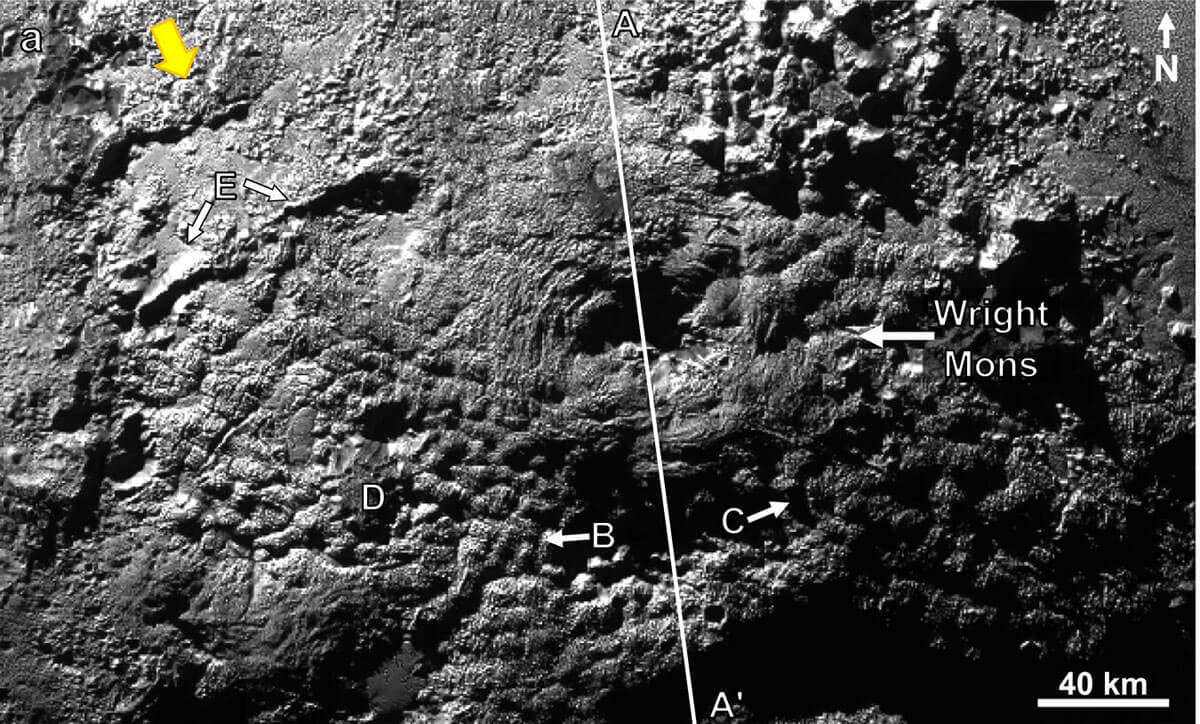Photos and data on the chemical composition of Pluto obtained from New Horizons indicate that the surface
On one of these “young” surface areasOn the dwarf planet, scientists discovered a huge field covered with hills with hilly slopes. The mountains found reach several kilometers in height.
As a result of the analysis of the relief and composition of the rocks of theseobjects planetologists came to the conclusion that the studied area of the surface of Pluto was formed as a result of cryovolcanic processes, the scale of which is unique for this dwarf planet. To create such a relief, according to scientists, several areas of volcanic activity are required, and the total volume of erupted rock should exceed 100 thousand cubic km.
"Instead of firing into the air, icevolcanoes slowly pour out a thick mixture of icy water,” says Kelsey Singer, a planetary scientist at the Southwestern Research Institute and one of the co-authors of the study, published in the journal Nature Communications.
Planetary scientists have studied in detail the two largestice mountains: Wright Mons, which is 4 to 5 km high and about 150 km wide, and Picard Mons, about 7 km high and 225 km in diameter. Wright Mons, as the researchers note, is comparable in height and volume to one of the largest volcanoes on Earth, Mauna Loa. Scientists emphasize that, given the difference in the size of our planet and Pluto, the mountains found appear gigantic.
 Wright Mons. Image: Kelsey Singer, Southwest Research Institute
Wright Mons. Image: Kelsey Singer, Southwest Research Institute
"It's hard for us to pinpoint exactly whenIce volcanoes formed, Singer notes, but we believe they could be a few hundred million years old or even less. The absence of impact craters in the area may indicate that surface formation is continuing even now.”
Planetologists emphasize that the existence of suchlarge and young mountains casts doubt on the low temperature of Pluto's internal structures, indicates the presence of additional energy sources that provided volcanic activity in the last stages of the development of the dwarf planet.
“Our discovery shows what a smalla body like Pluto, which should have lost most of its internal heat a long time ago, had enough energy to support large-scale geological activity,” says Lynn Quick, planetary scientist at NASA's Space Flight Center and co-author of the study.
Cover photo: Isaac Herrera, Kelsey Singer, NASA, Johns Hopkins Applied Physics Laboratory, Southwestern Research Institute
Read more
The "fifth element" exists: a new experiment will confirm that information is material
Found the remains of political refugees from the Middle Ages: they were considered victims of the plague
Marine fungus recycles plastic in two weeks